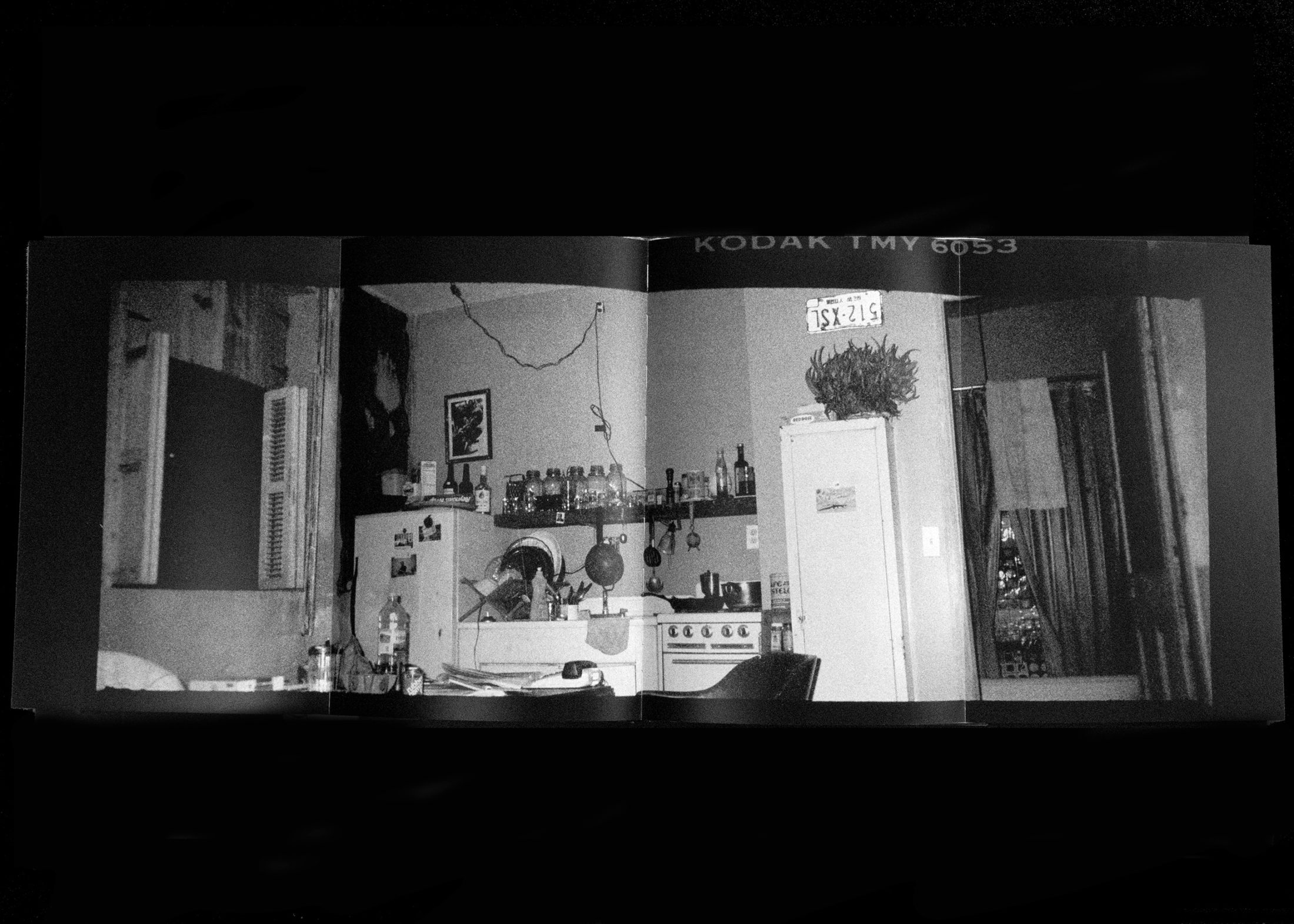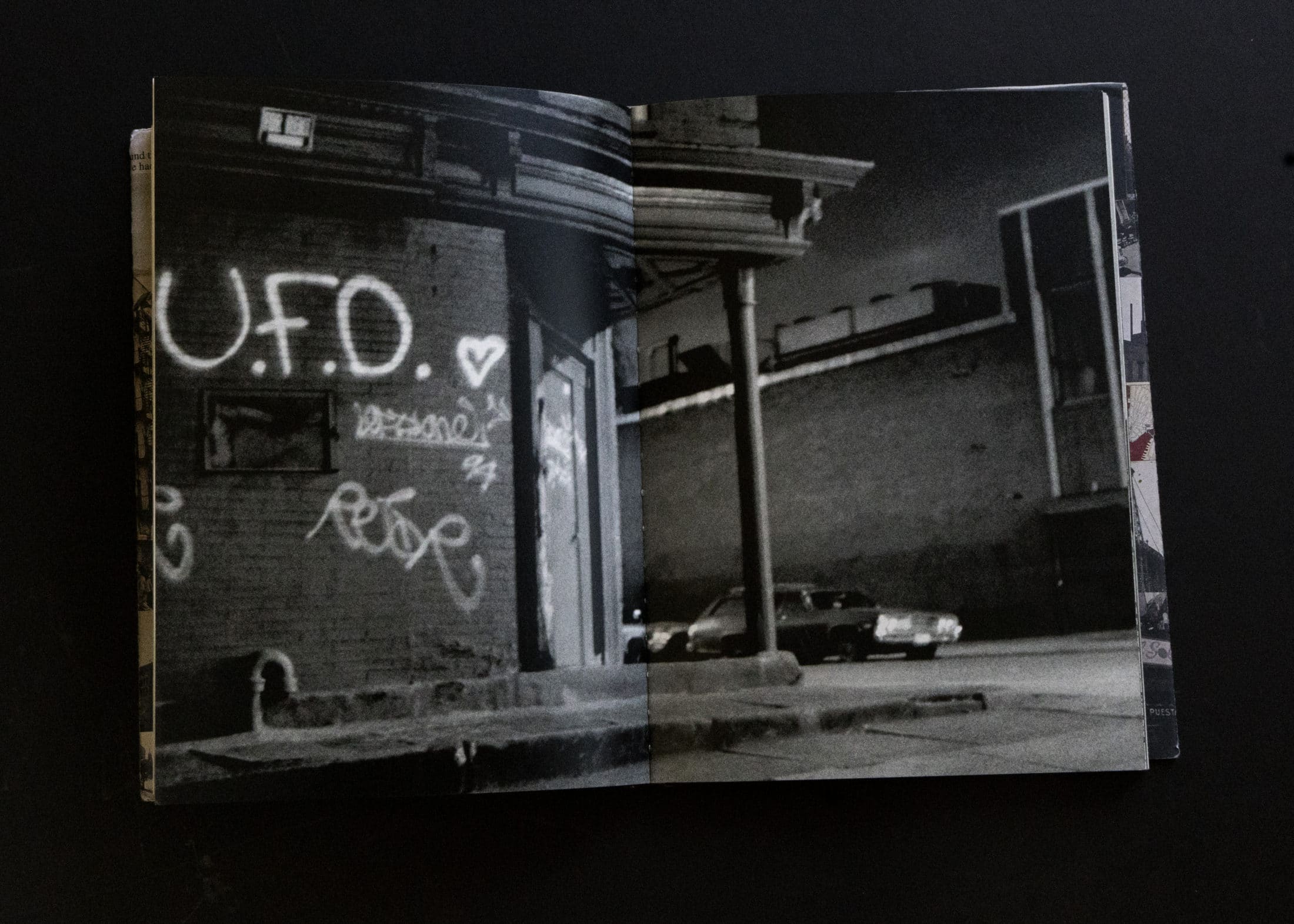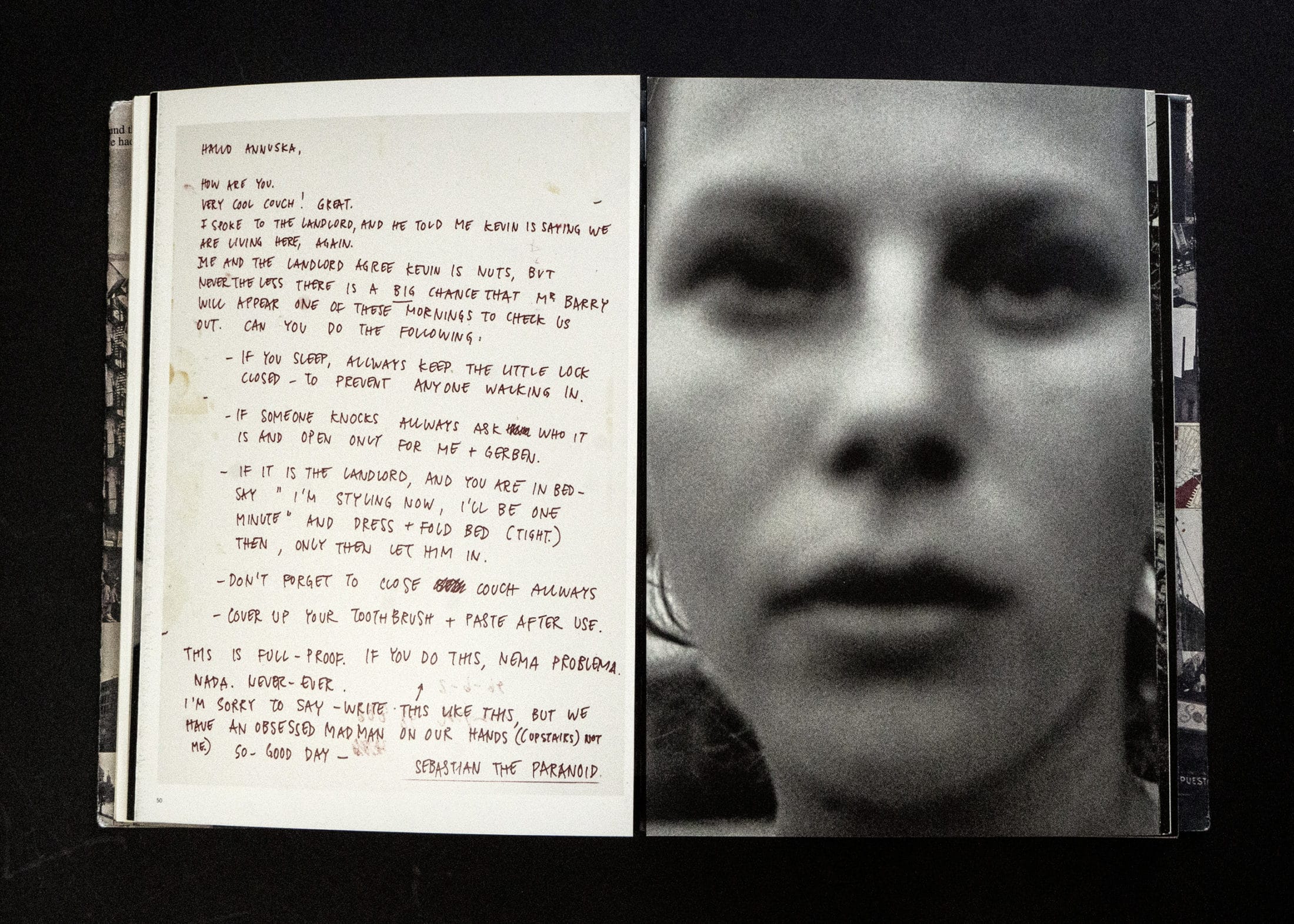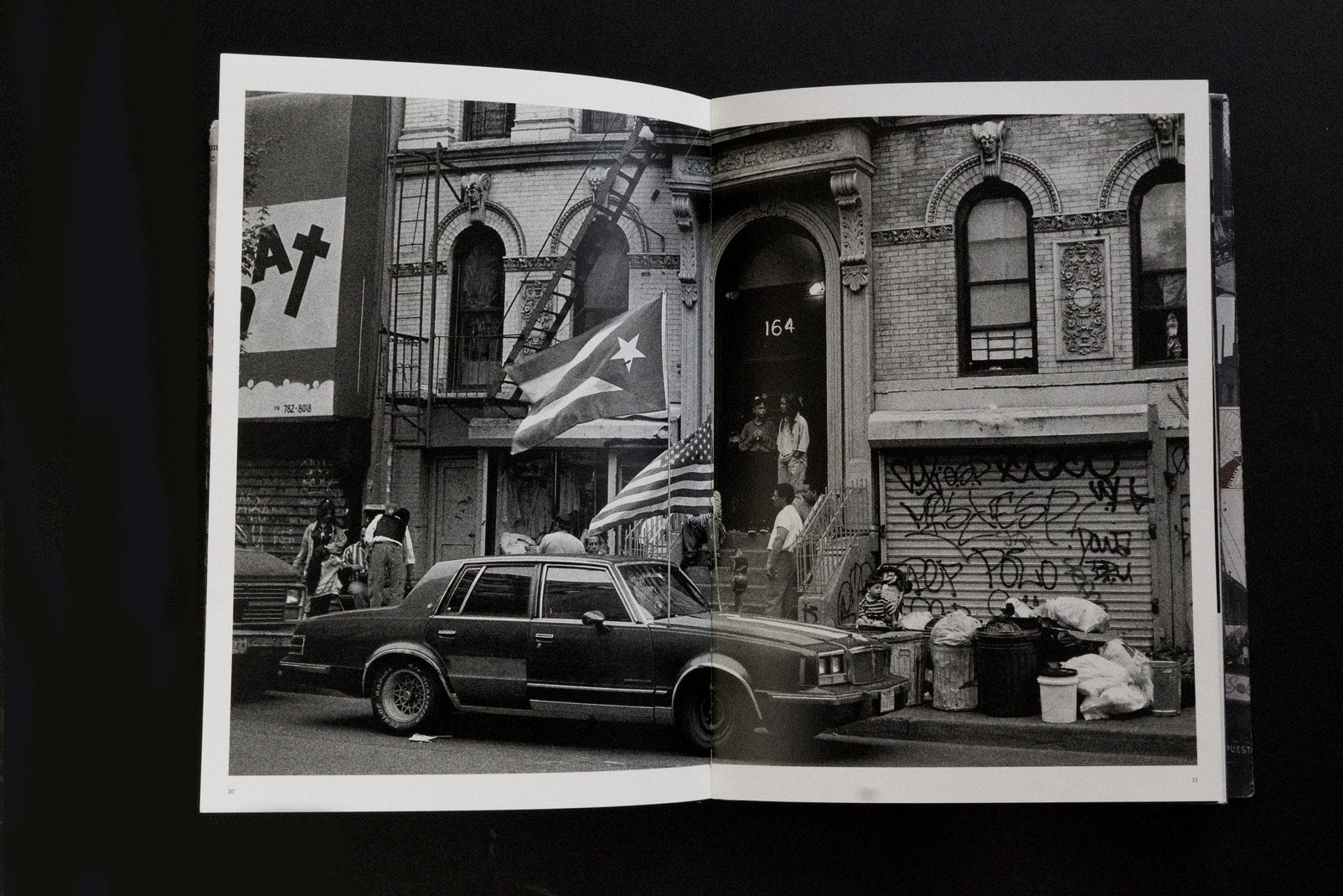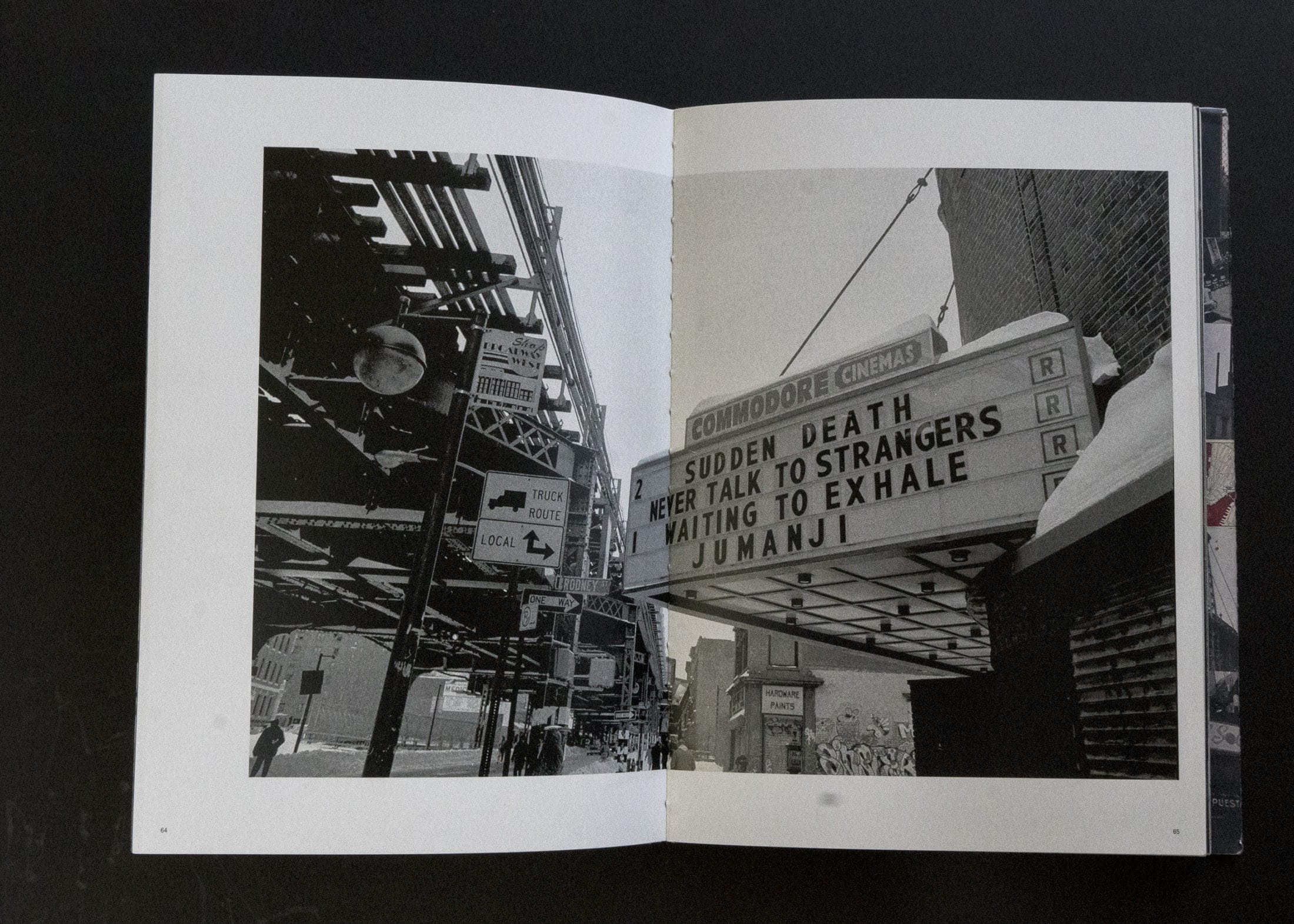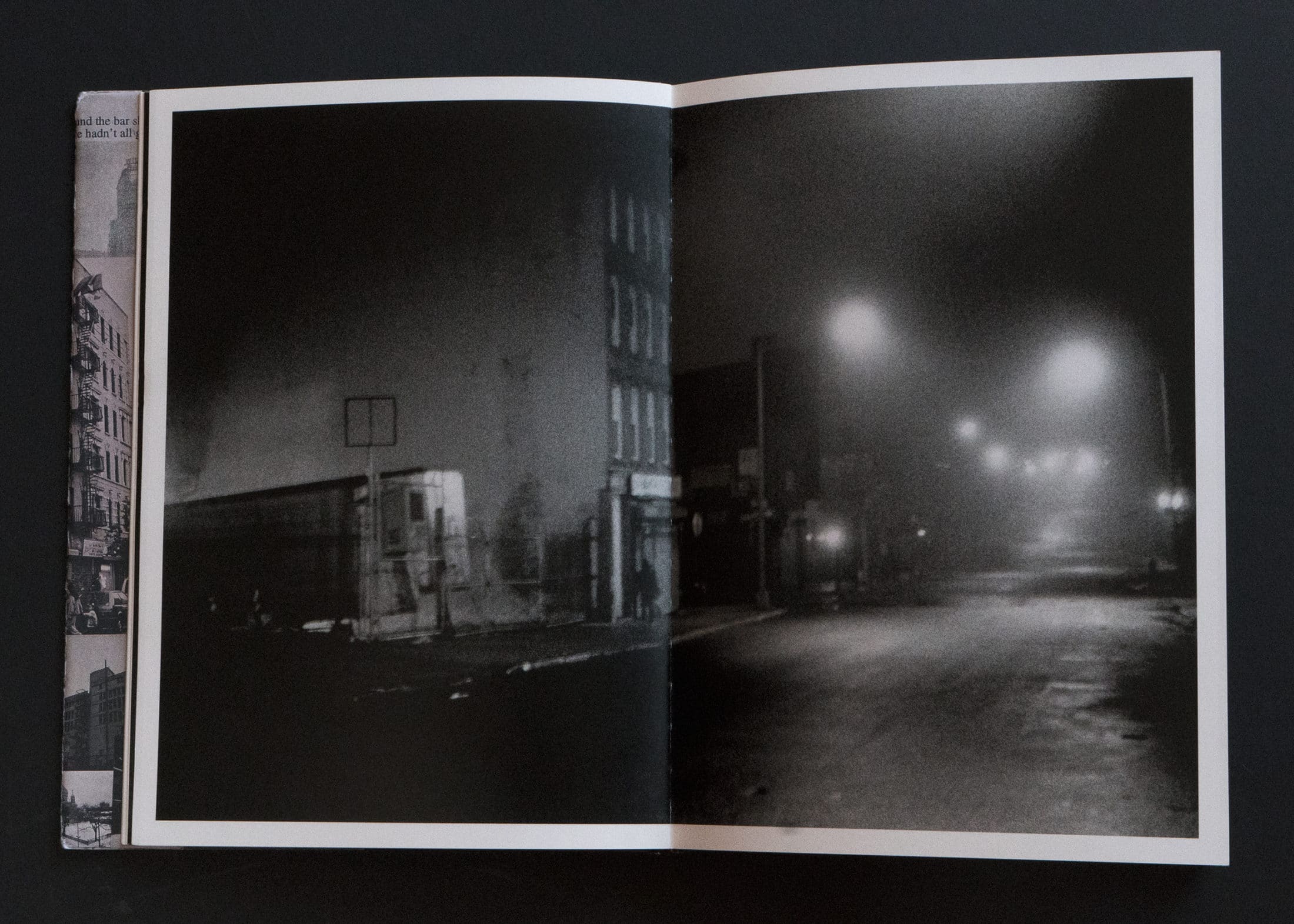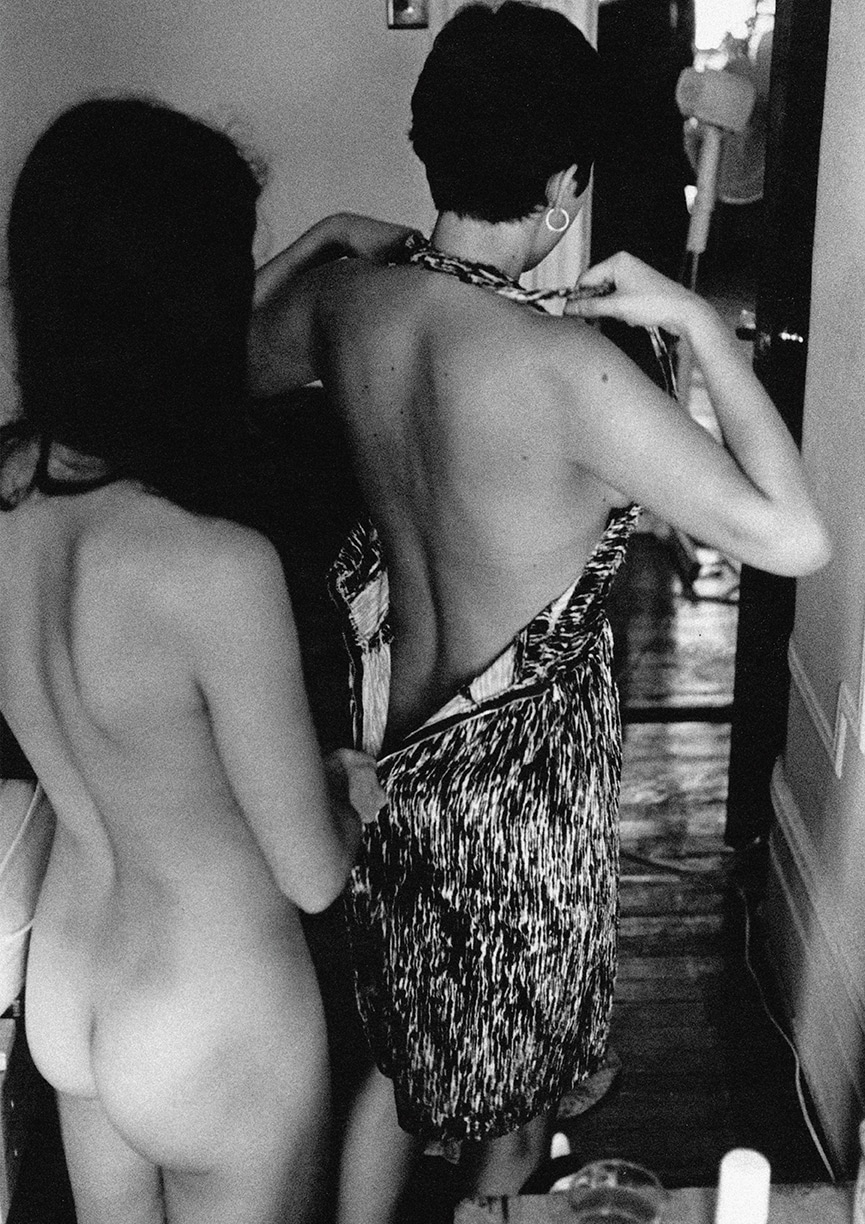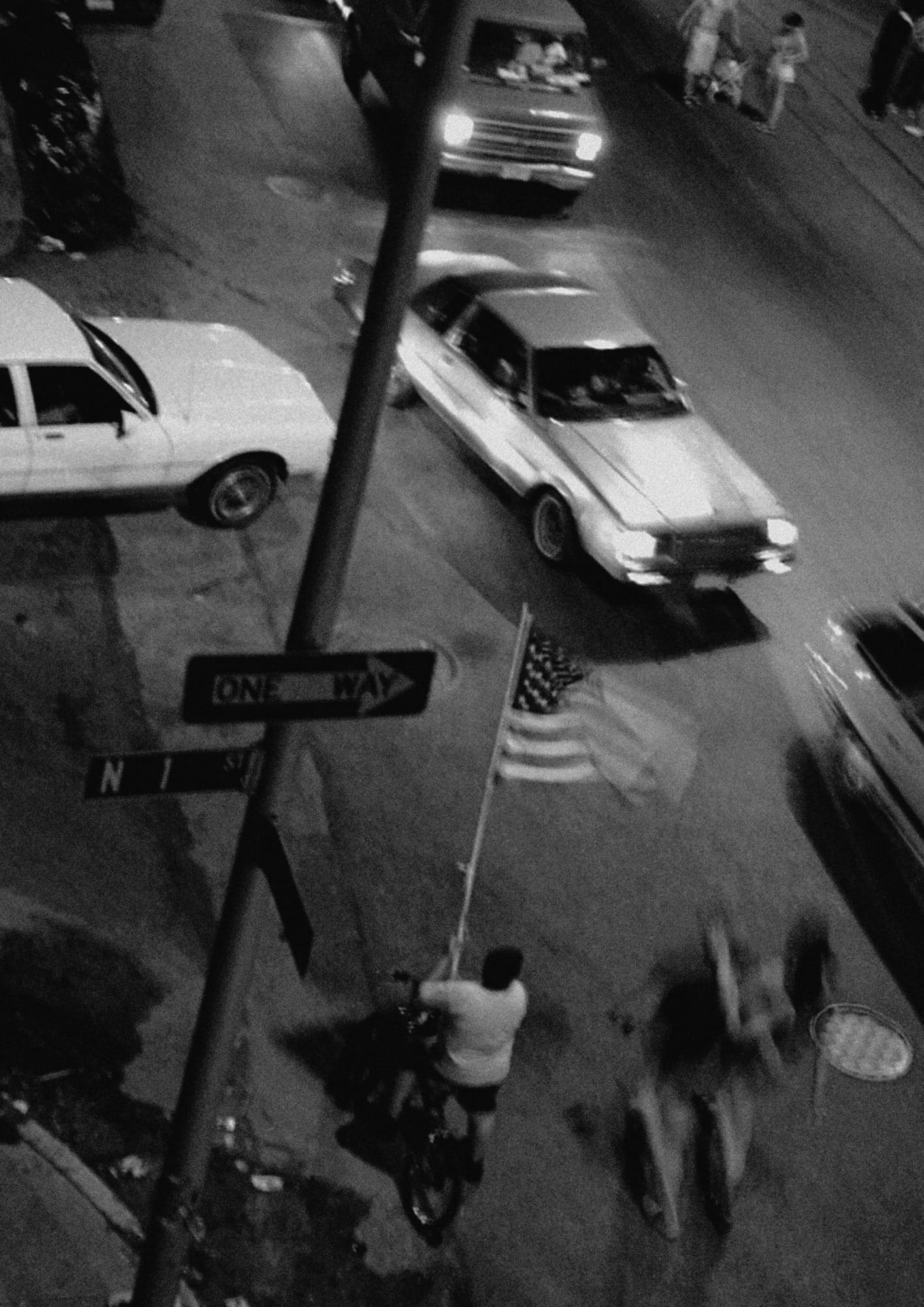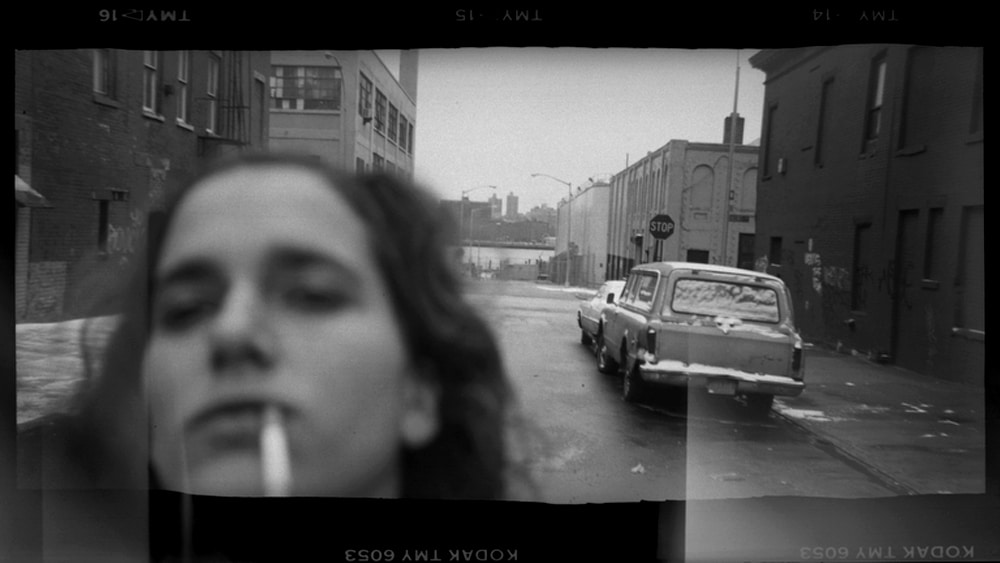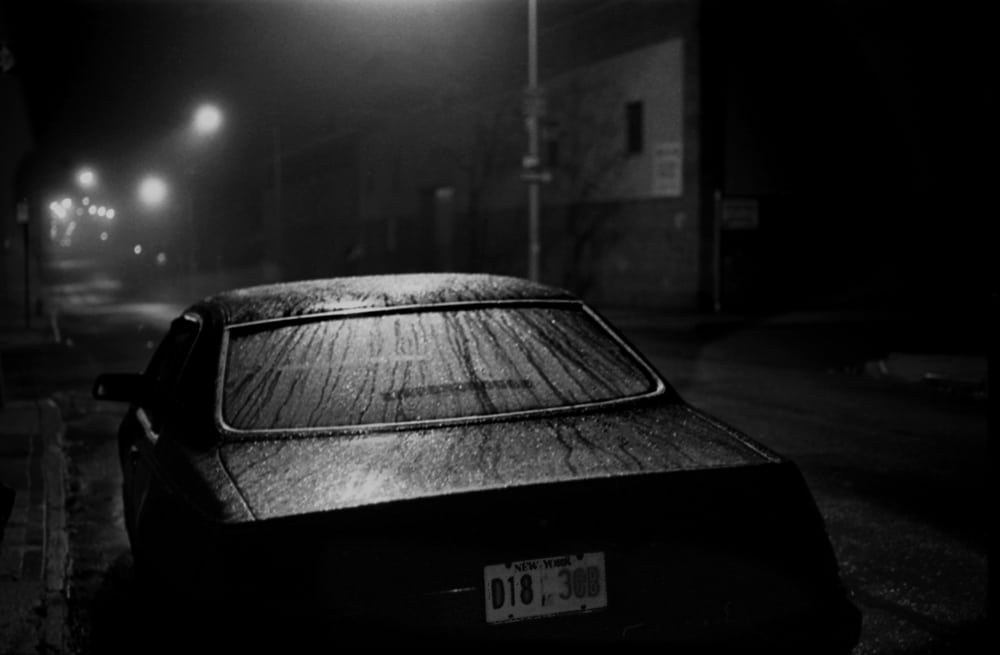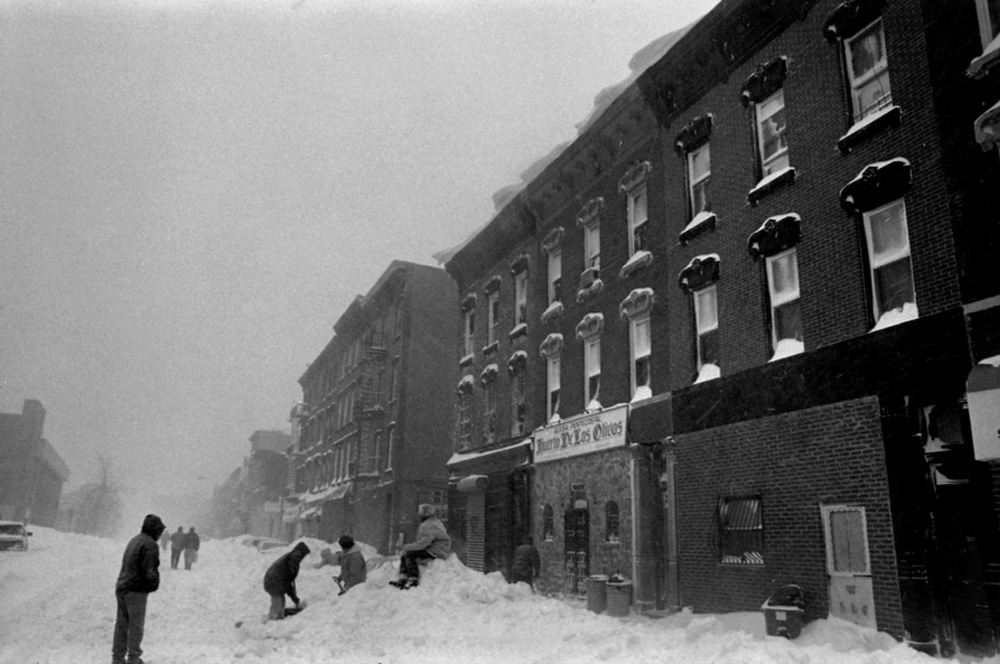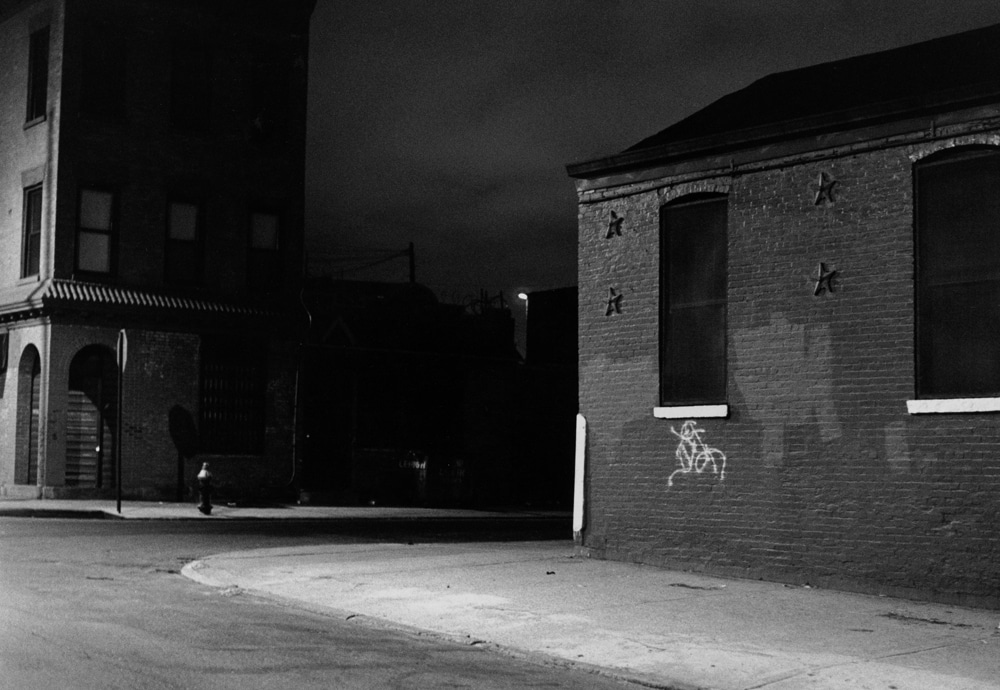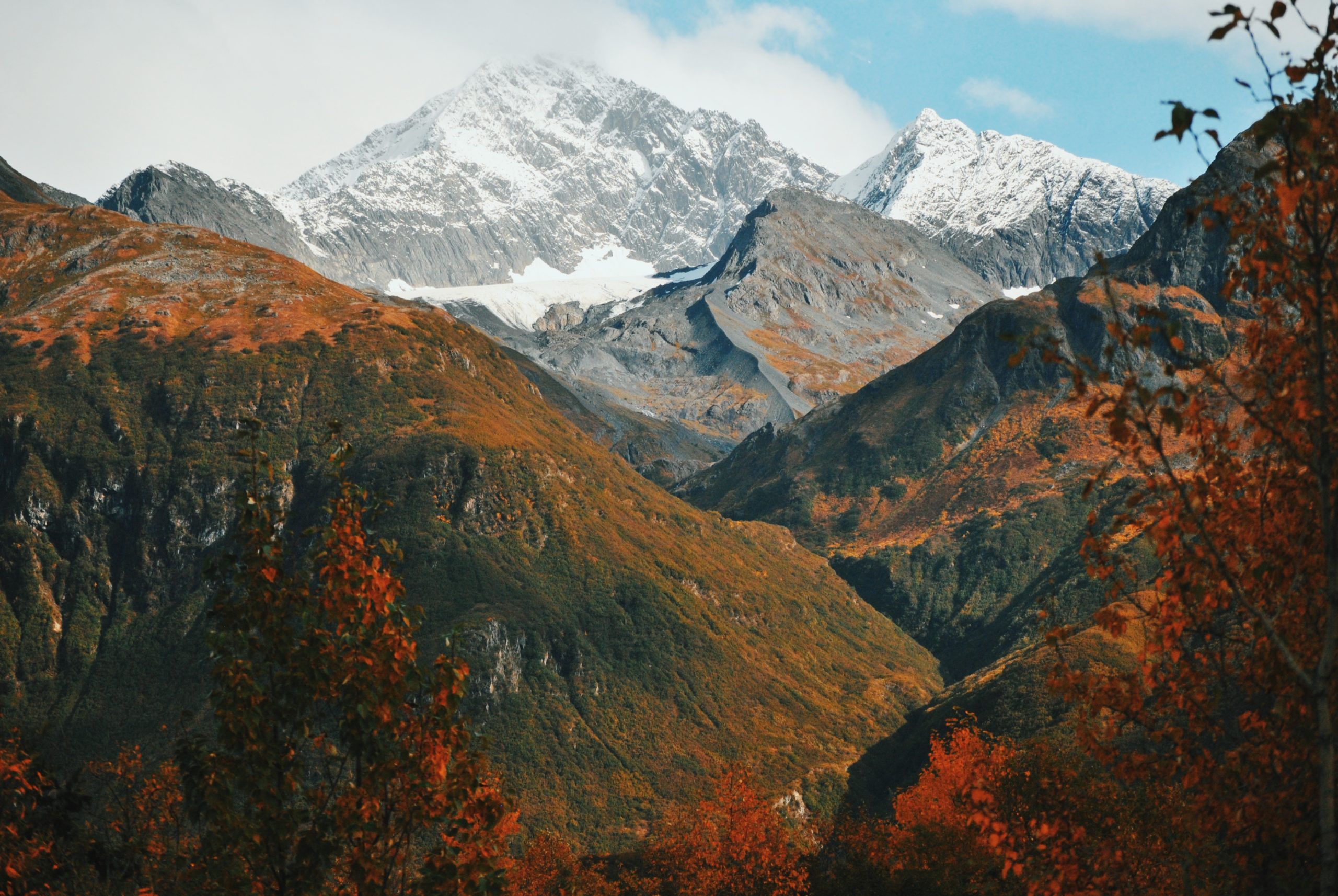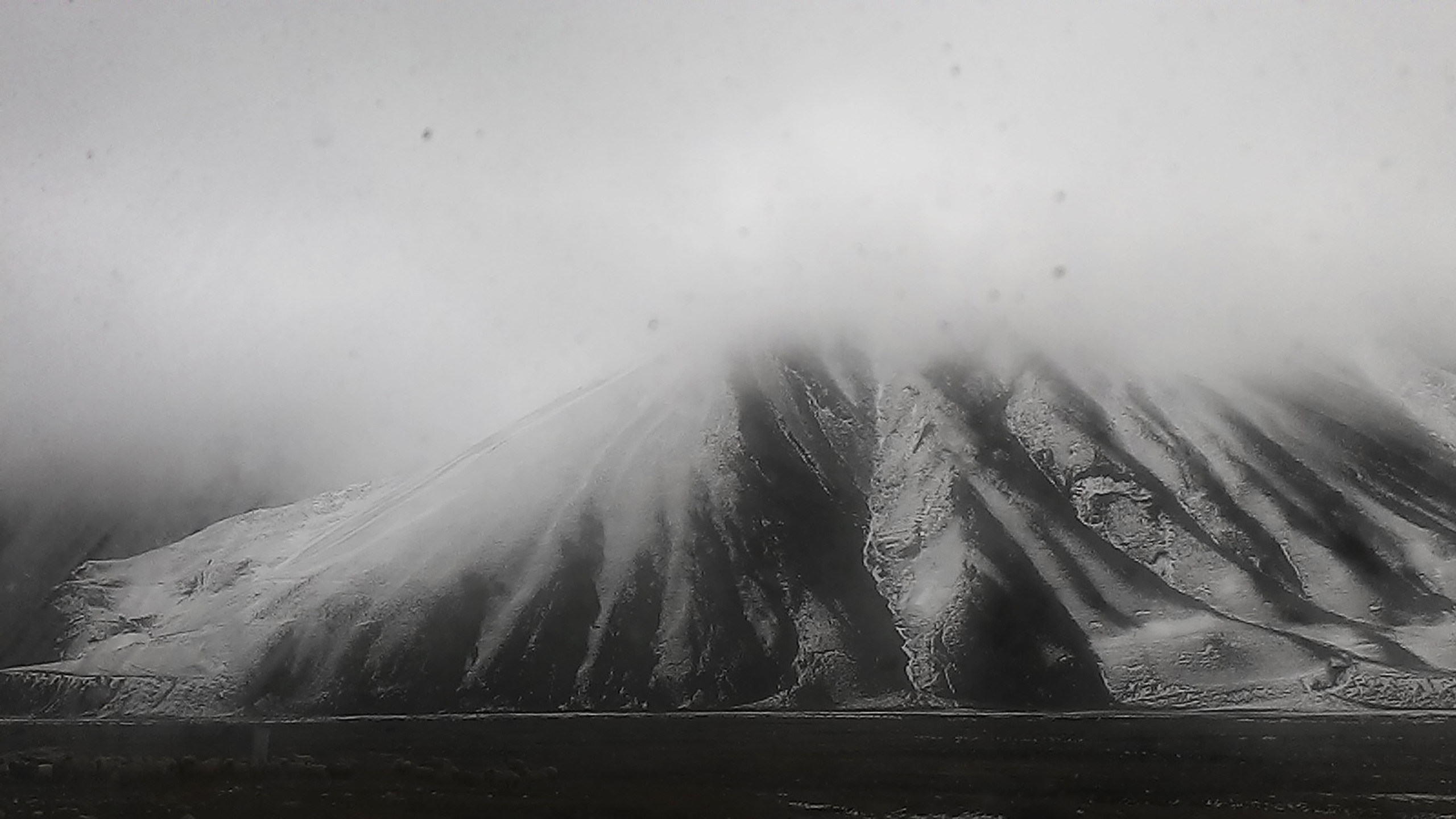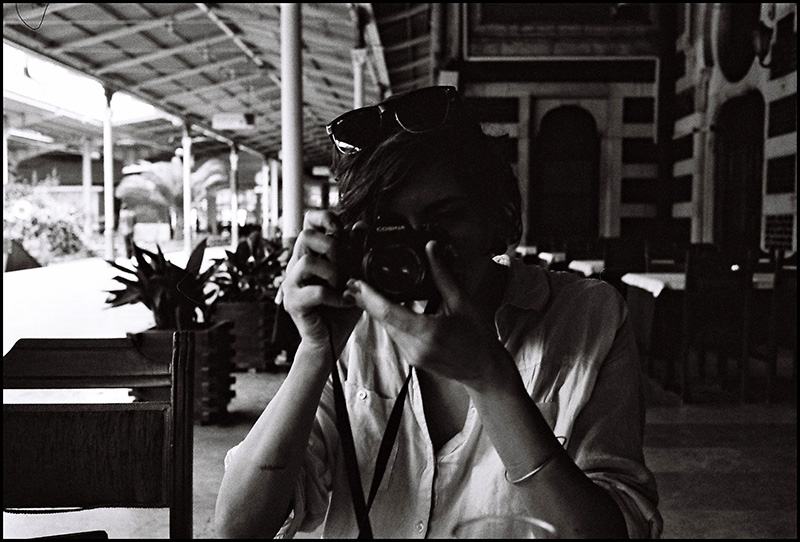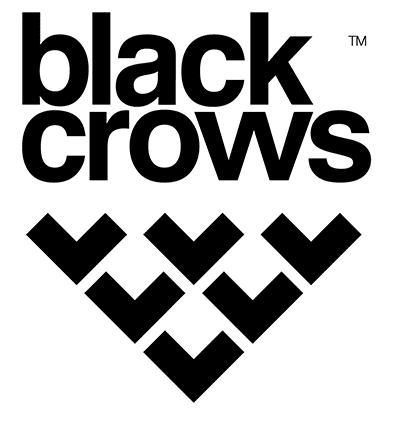Williamsburg, in the mid 1990, raw black and white, Mara Catalan’s eye captures the energy of the wild years in this neighborhood of New York in full bloom.
Mara Catalan, a photographer resident in New-York, has plunged in to her archives reawakening part of her life, the first years of unbridled life in the heart of the Williamsburg district of Brooklyn. In Williamsburg a place I once called home , she has assembled black and white photographs taken during this period such as the fragments of a flood of discoveries, friendships, concerts, parties, loves, projects, wonder and disappointment, all of which together formed the life of a young woman, newly landed from Madrid, with her eyes wide open on one of the most dynamic neighborhoods of one of the most dynamic cities in the world.
In Geneva, June 2019, Mara Catalan presented a photographic project in the exhibition Osmoscosmos at the Centre de la Photographie. The exhibition tried to bring together eros and cosmos, bodies responding to space, the creation of the world is reflected in the original matrix. Mara presented High Voltage, photographs taken in the midst of extreme artistic performances. It was hot. Outside we had a drink having wandered through this new centre bombarded with images. It’s classy. It’s Switzerland. It’s expensive. We decided to hunt for the best falafel in the city to feed ourselves without spending an arm and a leg. Mara joined us. She should without doubt have stayed to try and oil some wheels, but the movement prevailed. She couldn’t resist the energy of roaming the streets, letting the trajectories collide. This was followed by a transversal evening in which she proved to be a woman of contagious enthusiasm. The impression of running in all directions as if it made sense. The world was revealed in our footsteps. There was no guest there, it was open to all. Heels, rings, femininity, laughter, cameras, crossroads, strays, encounters, flashes, dizziness, smiles. Mara.
Williamsburg a place I once called home was born with an urgency, as if suddenly, time had begun to run out. “In 2008 my father died, a year later because of the loss I realized my broken heart had been wandering between two countries, two spaces with no sense of reality. Having lost my Mother at a very young age, loosing my Dad now was devastating and I felt as if I had lost touch with my own self, as if I didn’t belong anywhere in the world. This emotion led me to start looking into my photo archive, rescuing forgotten streets of the past, revisiting hidden memories, and lifting stones trying to recognize the smell of home.”
This neighborhood that she called home, is Williamsburg, one of the boroughs of Brooklyn, New York. Separated from Manhattan by the Williamsburg bridge, it is a working-class neighborhood where many Hasidic Jews live, which gradually gentrified during the 1990s. Mara was at the heart of the upheaval when artists, hipster culture and crazy nights of partying invaded this urban perimeter which has become « Little Berlin ». “I arrived in Williamsburg in 1994. Maria, one of my oldest sisters had moved to New York in the 80’s, when I was in my late twenties she hired me to do some photographic gigs for The New Music Seminar, a music Festival that had invited a group of Spanish musicians and I was to document their concerts. I came for a week to do this job and never left. Those first 3 years in the neighborhood would change my life forever. Not only did I experience during those years the weight of living on the edge, and met new friends that would later become a big part of my life – but I also found work at Lab One with Gar Lillard who helped me gain the tools necessary to survive in New York, training me to be the Black and White master printer that I am today.”
Due to this encounter, Mara was not only able to live from photography by becoming a printer at Lab One, but she also had the opportunity to use the lab during the night and thus make the link between shots and prints. . “When I met Gar he gave me an apprentice job for a few weeks and after I passed the test we made a deal that I would work with him full time for the following 3 years (no exceptions) and in exchange he would train me to become a master printer. In Lab One we printed mostly commercial work; fashion shoots, portraits and stills. and we had some of the most amazing customers in the city including Irving Penn and Bruce Weber. Until then, the only darkrooms I had ever used were the ones that I had created in my own bathroom or at my home in any available space with a sink close by. Gar had one rule for his employees. If we finished all the work of the day we had the liberty to print our own stuff for as many hours as we wanted. That meant free paper and free chemicals. For a starving artist that was a huge gift. He never charged us for what we used during that time. Sometimes I would stay all night. Those extra hours of doing our own printing were precious and very productive, not only did I learn my trade much better but it helped me produce much of my personal work at the time.”
It is thanks to this nocturnal work that Mara’s book came into being. She developed every image in the book. One discovers the bohemian life that Mara led at that time on the other side of the East River, in this crucible of freedom, rock and encountering. “My life at the time was hard. In the beginning I was living with my boyfriend Patro who arrived with me from Spain and we struggled to survive. He barely knew any English and had no papers. Finding work was not easy. We had little to no connections and we were starting from zero. Williamsburg was a dangerous neighborhood but it was cheap and spacious. We soon made good friends. Not only did I find my first American friends the Connoly brothers John and Brandon, who were the reason I moved to Williamsburg, but also other young people like us, foreigners and artists who were also struggling to survive. Not having money was an issue but it wouldn’t stop us from dreaming and doing. We had each other. We were non-stop. We loved to rock’n roll. No doubt. Love, music, parties, adventures, collaborations was all part of our skin. We were creative spirits and we had a whole neighborhood to be free and to do as we liked. There was no boundaries. No control. Nobody cared about us or about Williamsburg.”
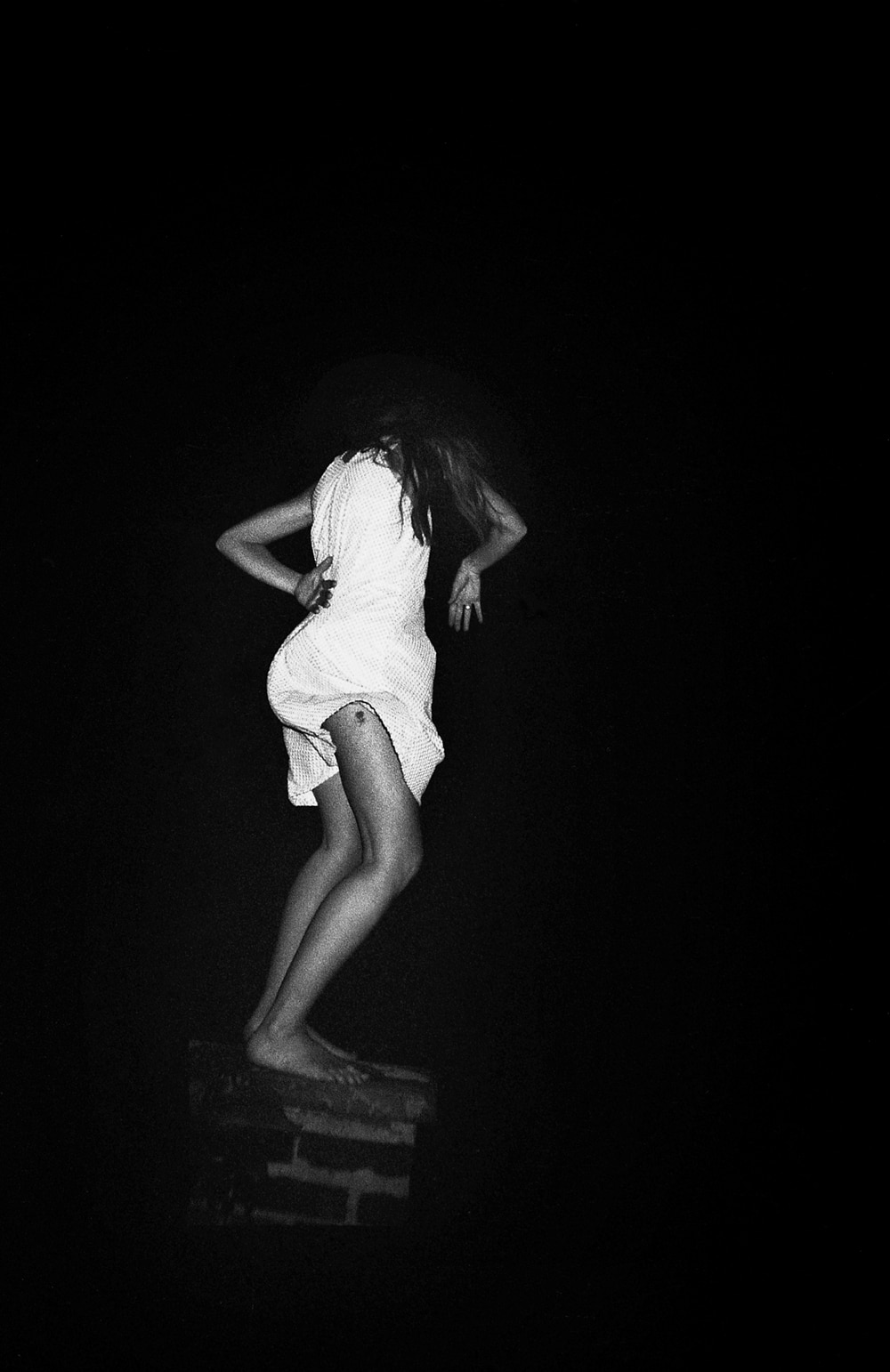
Mara Catalan
A friend dancing on a rooftop chimney at a party at 350 Manhatt
An archive of Williamsburg; Photographs taken between 1994-96
Beyond this immersion in the Williamsburg of the 1990’s, Williamsburg a place I once called home can also be seen as a witness of the rapid transformation of a city. Mara’s photographs can therefore be interpreted as an historic landmark for urban anthropology. “While many contemplate my images from my book with feelings of nostalgia or loss, Williamsburg a place I once called home represents fundamentally my personal journey and my memories but I also believe it represents a collection of documentary photography in the best tradition. I offer an archive of images of historical value, an urban documentation of an era in Williamsburg that has now disappeared. Due to the gentrification of the neighborhood many of the places and buildings that are in my book no longer exist. I guess I can say it is an archive that adds to the existing documents of the changing face of New York.”
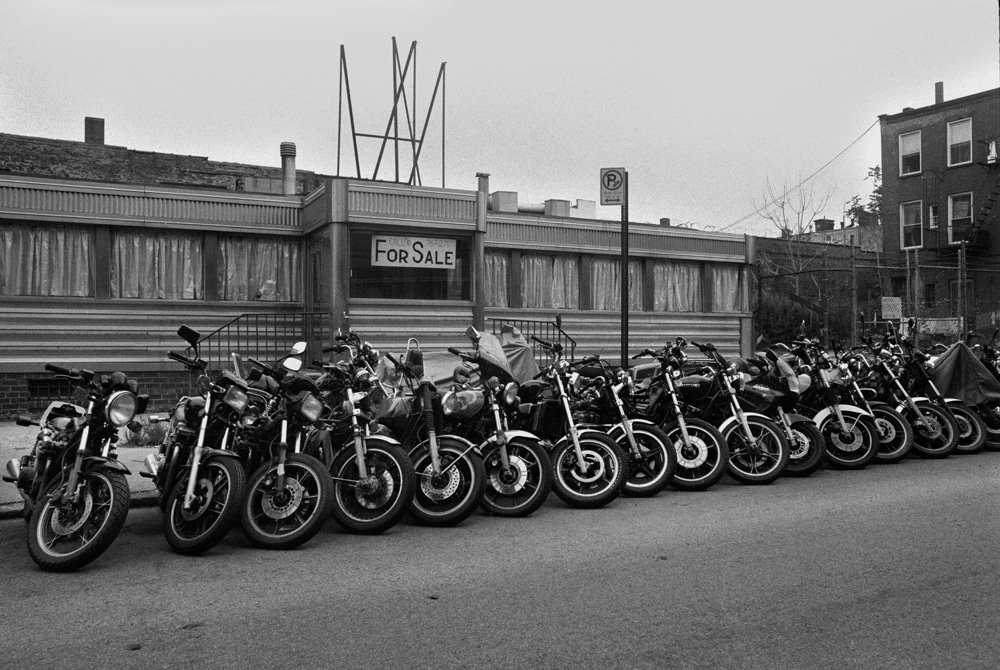
Mara Catalan
Diner for sale at 225 Wythe Avenue, with Slicks bikes parked on
An archive of Williamsburg; Photographs taken between 1994-96
Milestone of the city, this book is also a keystone of Mara’s artistic journey. The wild life of these wandering years made way to more elaborated projects, analog process gradually submitted to digital convenience and the lab was dethroned by printers. Nevertheless, if technical evolution prevails, Mara remains this great priestess of photochemistry, uncompromising when it comes to the value of gelatin-silver process. But above all, her creative energy kept growing and her desire to show underground artistic liveliness remains the fuel of her never satiated eye. “I think my photography keeps changing and evolving as does my life. I cannot separate one thing from the other. Williamsburg represents my forming years, a time to grow, to see, to explore and to recreate all those feelings through my darkroom. Now I feel as an adult I have more tools to play with. I feel other freedoms and a need to search for other ways of expression. For example, for the past three years, I have worked closely with performers developing relationship that challenges the traditional role of a photographer to only document or observe. My artistic practice has led me to have intimate bonds with my subjects traversing from observer to equally observed, using my photography as a device reflective of my inner subconscious, putting more importance on the creative process and participation than on the finished product.”
Book only available in the USA
Self portrait taken on Nth 1street in 1996
An archive of Williamsburg; Photographs taken between 1994-96
A night scene of a car parked on Berry street on a foggy night.
An archive of Williamsburg; Photographs taken between 1994-96
Morning after the blizzard at 141 Grand Street
An archive of Williamsburg; Photographs taken between 1994-96
Night view of Kokies bar, located at the corner of North 3rd str
An archive of Williamsburg; Photographs taken between 1994-96
